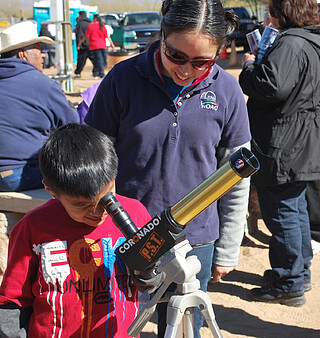Community Engagement
The astronomical community is honored to have the opportunity to conduct astronomical research on Iolkam Du’ag (Kitt Peak) in Arizona, on Maunakea in Hawai‘i, and on Cerro Tololo and Cerro Pachón in Chile. We recognize and acknowledge the very significant cultural role and reverence that these sites have to the Tohono O'odham Nation, to the Native Hawaiian community, and to the local communities in Chile, respectively.
NOIRLab is committed to authentic and productive community engagement with diverse audiences which include our users, stakeholders, and advocates in the astronomy research system. Our community engagement efforts have the goal that we will be important and effective partners, as well as authentic collaborators, in engaging with the broader astronomy research, communications, and education ecosystems.
To develop a strong community engagement system requires NOIRLab to identify the stakeholders and partners necessary to achieve our overall mission and to identify specific audiences and their specific needs to which NOIRLab can skillfully contribute. For example, NOIRLab is committed to the preservation of dark skies around our observing facilities to maintain our research productivity. To achieve this goal, NOIRLab partners with research and education organizations and co-develops programs with our partners that can collectively advance us towards our shared goal of dark night skies optimized for research work, for the appreciation of the public, for the preservation of health and energy, and even for economic growth through astro-tourism.
Similarly, NOIRLab works closely with local communities, including indigenous communities where our research sites are located, to make significant contributions to improve STEM education. In our community engagement effort, we strive to be authentic collaborators to solve the problems that our partners have identified as important. Another example of community engagement is our comprehensive, practical science communications effort, done in collaboration with the researchers who produce exciting results and our communications partners, who help us spread these results to multiple audiences using diverse media.
